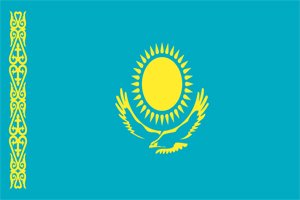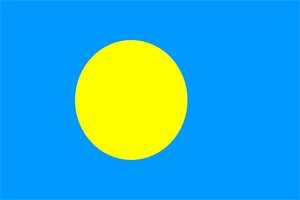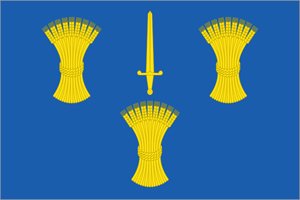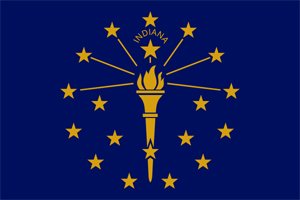
Flags are not just colorful pieces of cloth; they are powerful symbols that represent the identity, history, and aspirations of a nation or region. In this blog post, we will delve into the symbolism and meaning behind the blue and yellow flags of several countries and states, exploring their unique characteristics and the stories they tell.
Blue and Yellow Flags – Symbolism and Meaning
Colors have long been used as symbols to convey ideas and feelings. Blue, Yellow, and Red hold different meanings in colorful societies and surroundings. Let’s explore the symbolism and significance of each color. Also, Discover our comprehensive guide to countries featuring flags in black, red, and yellow.
Blue: In the realm of flag symbolism, the color blue transcends mere aesthetics, embodying profound meanings. Blue, often associated with the expansive sky and the boundless sea, represents vastness, freedom, and stability. It carries connotations of loyalty, strength, and determination, making it a powerful choice for national emblems.
Yellow: On the other hand, the color yellow brings warmth, positivity, and energy to the palette. Symbolizing sunlight, joy, and prosperity, yellow is a beacon of optimism. In the context of flags, it often signifies the richness of a nation’s resources and the promise of a bright future. The use of yellow captures attention and conveys a sense of hope and growth.
Blue and Yellow Together in Flags
When a flag harmoniously combines these two colors, it creates a visually striking and symbolically potent representation. The contrast between blue and yellow often symbolizes the harmony of opposites and unity in diversity. This combination represents a balance between stability and vibrancy, conveying the aspirations of nations for a harmonious coexistence and a future filled with promise.
In essence, the selection of blue and yellow flags goes beyond the realm of design choices. These colors serve as powerful carriers of cultural identity, national values, and the collective spirit of the people they represent. Whether standing alone or combined, blue and yellow paint a vivid picture of a nation’s character and aspirations.
Countries with Blue and Yellow Flags
Now, let’s explore several countries that incorporate the colors Blue and Yellow into their public flags, showcasing the different interpretations of these colors.
1. Ukraine

- Flag Description: The Ukrainian flag consists of two horizontal bands of equal width, with blue on the top and yellow on the bottom.
- Meaning: The association of blue with the sky and freedom is common, while yellow represents the country’s fertile fields. Together, these colors symbolize the nation’s unity, independence, and hope for a prosperous future.
- Time of Adoption: Ukraine officially adopted the current design on January 28, 1992, shortly after gaining independence from the Soviet Union.
2. Sweden

- Flag Description: Sweden’s flag, known as the “Swedish Cross” or the “Nordic Cross,” features a blue field with a gold or yellow cross that extends to the edges of the flag.
- Meaning: Believed to symbolize Sweden’s historical connections to Christianity and represent the country’s cultural heritage, the blue background with a gold or yellow cross is prominent.
- Time of Adoption: The design, dating back to the 16th century, was officially established with the current proportions in 1906.
3. European Union

- Flag Description: The European Union flag features a circle of 12 gold stars on a blue background.
- Meaning: The twelve stars represent unity and solidarity among the member states, and the blue background signifies the ideals of harmony and cooperation.
- Time of Adoption: In 1985, the designers introduced the current flag design featuring 12 stars, although the flag itself officially adopted on December 8, 1955.
4. Bosnia and Herzegovina

- Flag Description: The flag of Bosnia and Herzegovina consists of a blue field with a yellow isosceles triangle and seven full yellow stars.
- Meaning: The stars symbolize the sky, mountains, and rivers of Bosnia and Herzegovina, while the triangle represents the shape of the country.
- Time of Adoption: The flag was officially adopted on February 4, 1998, following the Dayton Agreement that ended the Bosnian War.
5. Kazakhstan

- Flag Description: Kazakhstan’s flag is a field of blue with a golden sun featuring 32 rays above a soaring golden steppe eagle.
- Meaning: The blue represents the sky, freedom, and cultural unity, while the gold symbolizes the country’s wealth, and the sun represents energy and progress.
- Time of Adoption: Kazakhstan officially adopted the current design on June 4, 1992, shortly after gaining independence from the Soviet Union.
6. Palau

- Flag Description: The flag of Palau features a light blue background with a yellow circle in the center containing a moon, and below it are the geometric designs of the full moon.
- Meaning: The blue represents the Pacific Ocean, while the yellow circle and moon symbolize Palau’s geographical position and its cultural ties to the moon.
- Time of Adoption: The flag was officially adopted on January 1, 1981, when Palau gained independence.
7. Cheshire

- Flag Description: Cheshire’s traditional flag consists of three vertical stripes of blue and yellow with a central shield.
- Meaning: The blue and yellow stripes represent the traditional colors of Cheshire, and the central shield includes symbols associated with the county, such as the wheatsheaf.
- Time of Adoption: Over time, the traditional flag of Cheshire gained recognition as the county’s official flag, and people widely use it to represent its historic heritage.
8. Oregon (State of USA)

- Flag Description: Oregon’s flag features a navy blue field with gold symbols, including the state seal, a covered wagon, and a British ship.
- Meaning: The state seal symbolizes Oregon’s natural beauty and resources, while the covered wagon and ship represent the pioneers who came to the area.
- Time of Adoption: On February 26, 1925, the flag was officially adopted.
9. Alaska (State of USA)

- Flag Description: Alaska’s flag consists of a blue field with the constellation Ursa Major, also known as the Big Dipper, and the North Star.
- Meaning: The blue background represents the sky and the sea, while the Big Dipper symbolizes strength and the North Star represents Alaska’s northern location.
- Time of Adoption: The flag was officially adopted on July 6, 1927.
10. Indiana (State of USA)

- Flag Description: A blue field with 19 gold stars arranged in the shape of a torch symbolizes liberty and enlightenment on Indiana’s flag.
- Meaning: The stars represent Indiana’s position as the 19th state to join the Union, and the torch signifies liberty and enlightenment.
- Time of Adoption: The flag was officially adopted on May 31, 1917.
Read More: Countries with Blue, Yellow, and Red Flag
Conclusion
The blue and yellow flags of these countries and states carry rich symbolism, reflecting their histories, values, and aspirations. Each flag tells a unique story, making them more than just colorful emblems but powerful symbols of identity and pride. Also, Discover a diverse array of nations boasting flags in striking Blue and White hues with our comprehensive guide.








